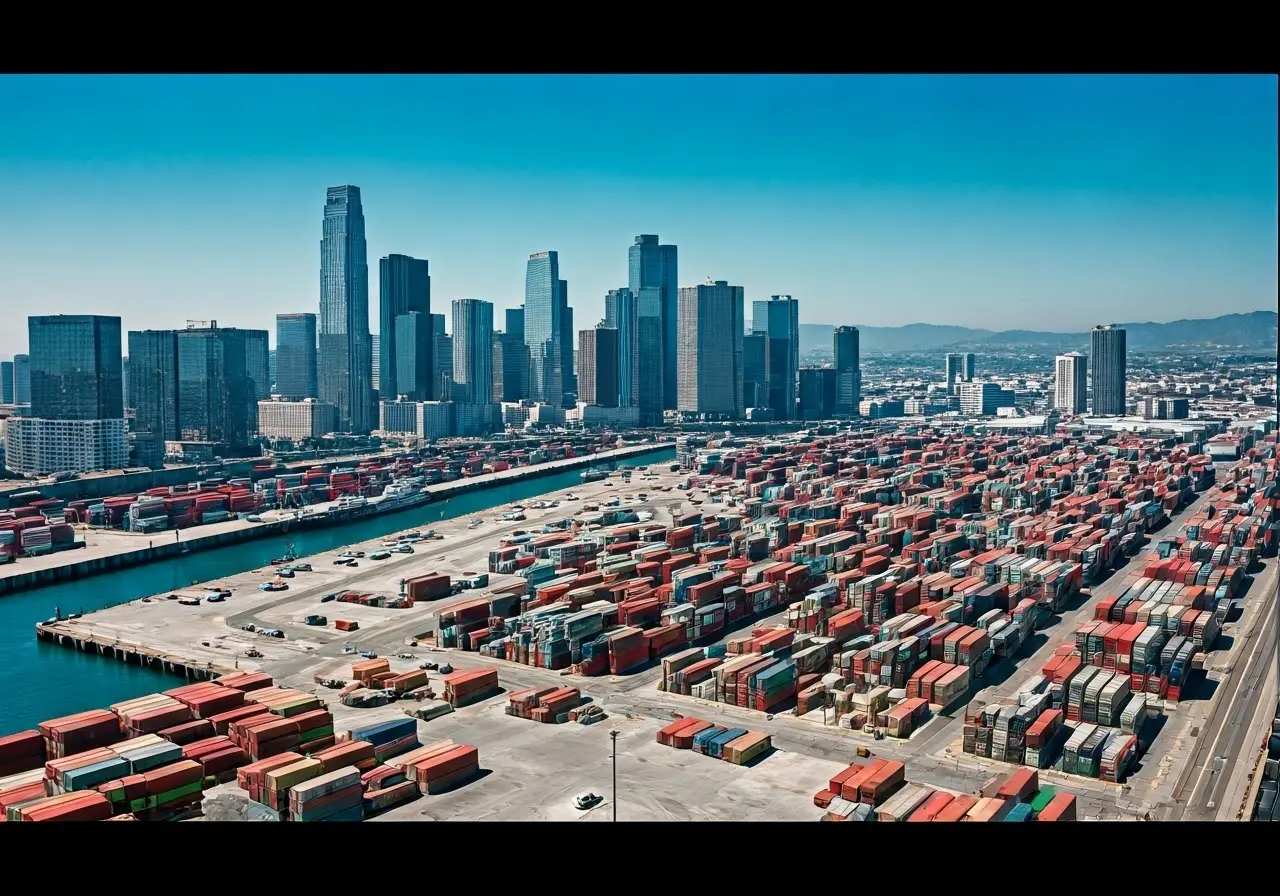How Distribution in LA is Transforming Business Logistics
Los Angeles, often seen as the cultural and economic hub of the West Coast, is fast becoming a pivotal player in the world of business logistics. With its strategic location and burgeoning infrastructure, LA is reshaping how goods are distributed not just across the United States, but globally. This shift is not only impacting local businesses but also setting new standards in the logistics industry. In this blog, we'll explore the transformative impact of distribution in LA and what it means for businesses both big and small.
The Strategic Advantage of LA's Location
Nestled along the Pacific coast, Los Angeles serves as a gateway between the East and the West. Its location allows businesses to efficiently manage international imports and exports, making it an ideal logistics hub. Los Angeles' proximity to the largest ports in the United States, notably the Port of Los Angeles and the Port of Long Beach, provides crucial connections for businesses looking to tap into international markets. The advantage of having distribution centers clustered around these bustling ports cannot be overstated, as it ensures quick and efficient transfer of goods, minimizing time spent in transit and reducing overall shipping costs. This strategic placement not only reduces shipping times but also allows for smoother supply chain operations.
Besides the seaports, Los Angeles also boasts a vast network of highways and railroads that facilitate the swift movement of goods across the city and beyond. This elaborate infrastructure is vital for businesses aiming to distribute products throughout the country and North America. The strategic geographical advantage of Los Angeles is a key driver in helping businesses achieve efficiency in distribution, meeting growing consumer expectations and maintaining competitiveness in an increasingly demanding market. The ability to quickly distribute goods from these distribution centers also allows businesses to maintain leaner inventories and respond flexibly to market demands.
Innovative Technology Driving Logistics in LA
From automation in warehouses to artificial intelligence in route planning, LA is embracing cutting-edge technology to streamline distribution processes. These innovations are significantly reducing costs and improving delivery times. In Los Angeles’ distribution centers, there's a move toward adopting automation and robotics, increasing productivity by automating repetitive tasks such as sorting, picking, and packing. Not only does this reduce labor costs, but it also minimizes human error, leading to increased accuracy and customer satisfaction. These technological shifts enable businesses to process more orders quickly and accurately, thus keeping up with the high pace of modern commerce.
Another exciting development in LA's logistics landscape is the utilization of artificial intelligence (AI). AI-driven route optimization tools help logistics companies determine the most efficient paths for delivery, considering factors like traffic patterns and weather conditions. These tools reduce fuel consumption and improve delivery times, making them both cost-effective and environmentally friendly. Furthermore, warehouse management systems integrated with AI provide real-time data analytics, enabling businesses to monitor inventory levels, predict demand, and optimize stock replenishment. This seamless integration of technology supports the growing demands placed on supply chains and distribution networks in LA, allowing companies to better serve their customers and maintain a competitive edge.
The Impact of E-commerce on Distribution Needs
With the rise of e-commerce, consumer expectations for faster deliveries have increased. LA's logistics sector is evolving to handle higher volumes of packages with greater efficiency to meet these new demands. The shift to online shopping has led to a dramatic increase in the volume of goods being processed through distribution centers. Companies are compelled to adopt more agile and responsive logistics practices to cope with this demand. In Los Angeles, the emphasis is on creating efficient distribution networks that can cater to e-commerce requirements.
The need for speed in order fulfillment has pushed many logistics companies in Los Angeles to utilize advanced systems like automated storage and retrieval systems (ASRS). These systems help in organizing products quickly and retrieving them as orders come in, substantially reducing the time taken from order placement to dispatch. Additionally, last-mile delivery, an essential component of e-commerce logistics, has seen significant improvements in LA. With innovations like drones and autonomous vehicles on the horizon, coupled with the existing use of optimized delivery routes and same-day delivery solutions, businesses are better equipped to meet the stringent demands of today's online shoppers.
Moreover, as consumers increasingly prioritize sustainability, ecommerce companies are revising their logistics strategies to include eco-friendly practices. This trend involves optimizing packaging to reduce waste and transitioning to electric vehicles for local deliveries. By implementing these sustainable strategies, businesses not only respond to consumer demands but also contribute positively to LA’s broader environmental goals.
Sustainability in Logistics: LA's Green Initiatives
As environmental concerns grow, Los Angeles is taking steps to incorporate sustainable practices in its logistics operations. From electric delivery vehicles to eco-friendly packaging, LA is leading the charge towards a greener future. With the introduction of sustainable logistics practices, Los Angeles is setting a benchmark for eco-friendly operations that other cities can emulate. The city has been proactive in encouraging businesses to reduce their carbon footprints, aligning with wider state initiatives aimed at combating climate change. The use of electric and hybrid transportation options is becoming more prevalent, drastically cutting down on greenhouse gas emissions associated with traditional diesel-powered delivery vehicles.
In addition to changing how goods are transported, Los Angeles is also focusing on the packaging aspect of logistics. Many companies are now turning to biodegradable and recyclable materials, which help decrease waste and pollution. By adopting circular economy models, where materials are reused and recycled instead of being discarded, LA's logistics industry is moving toward a more sustainable future. These green initiatives are not just about meeting regulations but also about contributing to a healthier environment and appealing to eco-conscious consumers, who are increasingly making purchasing decisions based on a company's environmental impact.
Embracing LA's Logistics Evolution
The transformation of business logistics in Los Angeles is a testament to the city's ability to innovate and adapt to the demands of a changing world. As LA continues to enhance its distribution capabilities, businesses that tap into this growth are poised to thrive. From advancing technology to sustainable practices, the distribution evolution in LA offers exciting opportunities and sets a benchmark for other cities globally.

